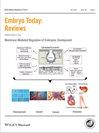The very low birth weight infant microbiome and childhood health.
Q Medicine
引用次数: 81
Abstract
This review describes current understandings about the nature of the very low birth weight infant (VLBW) gut microbiome. VLBW infants often experience disruptive pregnancies and births, and prenatal factors can influence the maturity of the gut and immune system, and disturb microbial balance and succession. Many VLBWs experience rapid vaginal or Caesarean births. After birth these infants often have delays in enteral feeding, and many receive little or no mother's own milk. Furthermore the stressors of neonatal life in the hospital environment, common use of antibiotics, invasive procedures and maternal separation can contribute to dysbiosis. These infants experience gastrointestinal dysfunction, sepsis, transfusions, necrotizing enterocolitis, oxygen toxicity, and other pathophysiological conditions that affect the normal microbiota. The skin is susceptible to dysbiosis, due to its fragility and contact with NICU organisms. Dysbiosis in early life may resolve but little is known about the timing of the development of the signature gut microbiome in VLBWs. Dysbiosis has been associated with a number of physical and behavioral problems, including autism spectrum disorders, allergy and asthma, gastrointestinal disease, obesity, depression, and anxiety. Dysbiosis may be prevented or ameliorated in part by prenatal care, breast milk feeding, skin to skin contact, use of antibiotics only when necessary, and vigilance during infancy and early childhood.极低出生体重婴儿微生物群与儿童健康。
这篇综述描述了目前对极低出生体重婴儿(VLBW)肠道微生物群性质的理解。VLBW婴儿经常经历破坏性的怀孕和分娩,产前因素可以影响肠道和免疫系统的成熟,扰乱微生物的平衡和继承。许多VLBWs经历了快速阴道分娩或剖腹产。出生后,这些婴儿往往在肠内喂养方面有延迟,许多婴儿很少或根本没有母乳。此外,医院环境中新生儿生活的压力因素、抗生素的普遍使用、侵入性手术和产妇分离都可能导致生态失调。这些婴儿会经历胃肠道功能障碍、败血症、输血、坏死性小肠结肠炎、氧中毒和其他影响正常微生物群的病理生理状况。由于皮肤的脆弱性和与新生儿重症监护病房的生物接触,皮肤容易受到生态失调的影响。生命早期的生态失调可能会解决,但对于VLBWs中标志性肠道微生物群的发育时间知之甚少。生态失调与许多身体和行为问题有关,包括自闭症谱系障碍、过敏和哮喘、胃肠道疾病、肥胖、抑郁和焦虑。通过产前护理、母乳喂养、皮肤对皮肤接触、仅在必要时使用抗生素以及在婴儿期和幼儿期保持警惕,可以预防或部分改善生态失调。
本文章由计算机程序翻译,如有差异,请以英文原文为准。
求助全文
约1分钟内获得全文
求助全文
来源期刊

Birth Defects Research Part C-Embryo Today-Reviews
DEVELOPMENTAL BIOLOGY-
CiteScore
3.65
自引率
0.00%
发文量
0
审稿时长
>12 weeks
期刊介绍:
John Wiley & Sons and the Teratology Society are please to announce a new journal, Birth Defects Research . This new journal is a comprehensive resource of original research and reviews in fields related to embryo-fetal development and reproduction. Birth Defects Research draws from the expertise and reputation of two current Wiley journals, and introduces a new forum for reviews in developmental biology and embryology. Part C: Embryo Today: Reviews
 求助内容:
求助内容: 应助结果提醒方式:
应助结果提醒方式:


